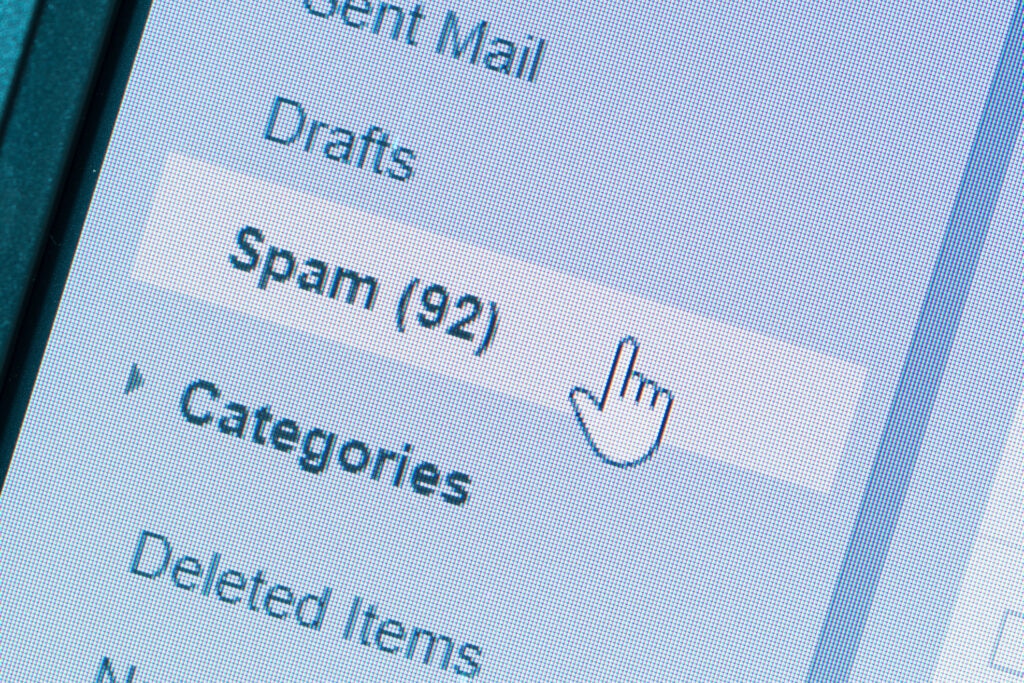Nothing screams “so close, yet so far” like getting your email delivered — right to a lead’s spam folder. Why do prospecting emails go to junk, you ask? There are a few potential reasons that we lay out below. But before we explore them in more detail, there’s one thing you should keep in mind: you can never be 100 percent certain that some of your emails won’t end up in spam, regardless of what you do — and you may never know when that happens. Instead, you have to rely on specific indicators from digital tools to help gauge whether you’re reaching most of the people you’re targeting.
Email Deliverability vs. Spam
Prospecting emails tend to be sent using some form of automation. If it’s marketing automation, the vendor or platform will likely require you to acknowledge that the people you’re emailing have agreed to hear from you.
Why?
First, it cuts down on spam reports, which protects your sender reputation and keeps you from being blacklisted. Second, it improves your email deliverability because you’re sending to active addresses.
So if the contacts you’re targeting are accurate, and they’ve opted in to your communication, are your emails guaranteed to be seen and opened by your leads?
Not necessarily. Automation may tell you that your emails are delivered, but that doesn’t necessarily mean delivered to inboxes. They could still be in spam folders and you’d be none the wiser.
This is because the code that communicates between the marketing automation and the email inbox may not be able to recognize that you’ve been flagged as spam. And this isn’t the only inbox action that code may distort. While marketers have long relied on statistics like open and click-through rates to gauge the effectiveness of their email campaigns, sometimes email platforms cause that code to register actions falsely.
To clarify, we aren’t saying that you should distrust all automation statistics. What we are saying is that results can sometimes be inaccurate, and most of those inaccuracies are relatively easy to spot — i.e., a lead clicks every possible link in an email, or clicks the first link in every email you send; or a lead opens your email twenty times in a ten-minute period.
Although prospecting emails go to junk even when you use clean lists and follow the rules, you can reduce that number by incorporating the following.
1. Avoid Trigger Words and Sales Speak
You’ve probably heard before how spam filters look for trigger words to filter your emails, so it’s best to avoid them. If you’d like a refresher on what some of those are, check out this extensive list, courtesy of HubSpot.
Most people know when they’re being marketed to or pitched, and email platforms are getting better at discerning that, too. That’s why we encourage our clients to craft prospecting emails that are brief, personalized, and sound like a natural exchange between two people. Keep your subject lines and message bodies engaging, but not salesy.
Along with that brevity, it’s also important to keep your message focused. Ask one or two questions, max. Don’t try to overshare about your company, or confuse your readers by discussing more than one subject per email. That way, as your emails do go through, you don’t run the risk of turning your readers off and having them manually flag you as spam.
2. Check the Health of Your Sender IPs
Every email comes from an IP address, and the health of that address can determine whether your email makes it to an inbox.
You want to avoid getting your IPs listed on any spam filters, especially industry favorites like SORBS. According to their website, SORBS has been able to “block email from more than 12 million host servers known to disseminate spam, phishing attacks and other forms of malicious email.” Definitely not the kind of company you want your IPs to keep.
You can find out whether SORBS has flagged you by using the free email spam-test tool, MxToolbox. Simply go to their website, navigate to their Blacklists tab, copy and paste your IP address into the box, and click “Blacklist Check.” If you are listed, you’ll either need to send a direct request to SORBS to delist your IP, or notify your email automation provider.
3. Nix the Images
Some inbox platforms have difficulty reading images — and if they can’t read yours, it could be enough to have your prospecting emails go to junk. This is especially true when leads are just hearing from you for the first time, which is why we recommend nixing images altogether.
Images may be appropriate for your marketing emails down the line, once your leads learn more about who you are and their inboxes recognize you as a trusted sender. But during your initial prospecting, they can do more harm than good.
If you still decide to include them, embed them with ALT text so that inboxes identify them, and aim to have an equal or greater amount of visual text in message bodies to offset them.
Now that you know what to avoid, how do you know if it’s working?
Indications Your Emails Are Getting Through
Generally speaking, you want to see the following indicators to know that your emails are getting through:
- Your IP is clean, according to spam-testing tools.
- The email marketing platform you use gives you a high percentage deliverability.
- Your recorded open rates are in a healthy range, or increasing.
- You see an uptick in the number of direct responses.
Note: What’s considered a healthy open rate? That could easily be a separate discussion, as estimates vary based on industry, whether your leads are in the prospecting or marketing stage, and how they’re affected by cookie policies. But if we had to give a ballpark figure, we’d say 12 – 15 percent.
Want Help so You Don’t See Your Prospecting Emails Go to Junk?
Are you concerned that your emails aren’t getting through to your best leads? We’d like to help.
Prospecto has partnered with businesses across several industries to grow their contact databases and improve their outbound prospecting. If you have questions about the material above, or about how to apply it to your own email outreach, we want to hear from you. Click the link below to schedule a free consultation.





